Getting out on the water and enjoying the Pacific Northwest’s beautiful scenery is a wonderful way to spend quality time with your kids. This is the ideal time to get rid of screens and electronics and focus on each other. Whether your boat is a single-person kayak or a sailboat big enough for all the kids plus their friends, there’s something relaxing and refreshing about exploring waterways. To the inexperienced, taking children on a boat might seem daunting; however, with a few safety considerations, exploring on the water can be fun for all ages. Here are some tips for keeping kids safe while boating.
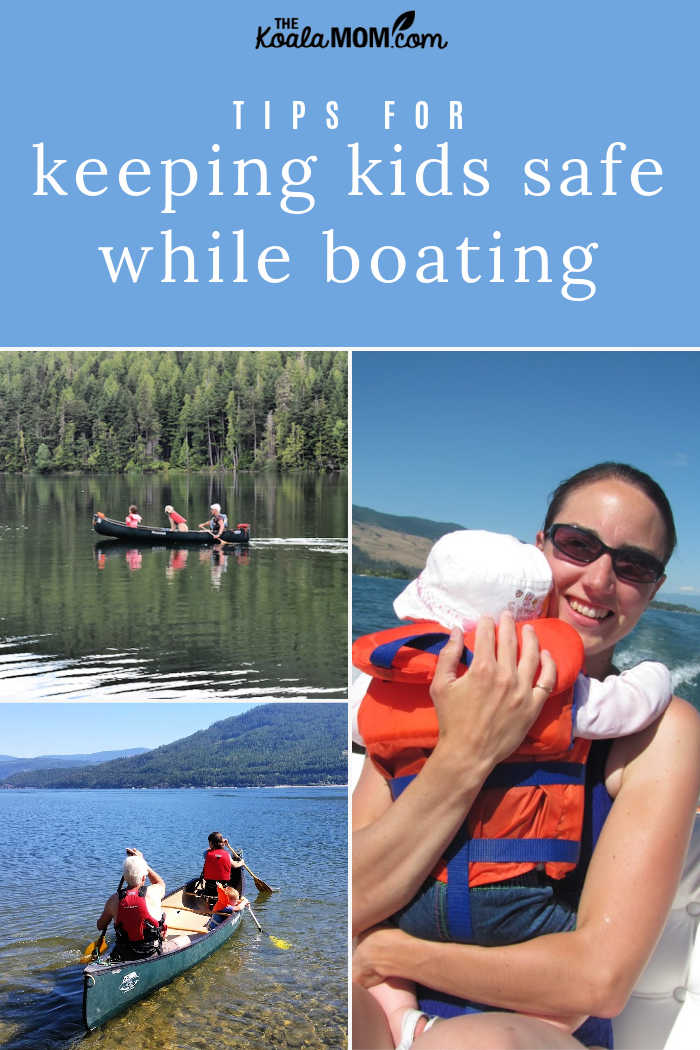
Before you even head out in your boat, making sure it is in good condition is important. If you had a boat before having kids, then you were probably happy to purchase a boat cover that lasts as it might have been a while since you got out. Boats should be stored well and maintained regularly to ensure they are safe for your family to use.
This post contains affiliate links; as an Amazon associate, I earn from qualifying purchases.
Wear Life Jackets and PFDs
All children and adults on a watercraft in Canada are required to have a properly fitted life jacket. The size required is determined by the weight of the person. Most life jackets have a panel inside the back giving safety specifications and the weight range for the wearer. At the start of each boating season, it’s a good idea to check your child’s PFD and make sure it still fits properly.
Not all life jackets or flotations devices available for sale are approved as life saving devices. Some may help your child have fun at the beach, but won’t help them if they fall into deep water. Your child’s life jacket or Personal Floatation Device (PFD) should be approved by either Transport Canada, Oceans Canada or the Canadian Coast Guard. For more explanations about the various lifejackets and PFDs models, check out Transport Canada’s guidelines.
Make sure to get a life jacket that will automatically turn your child face-up if they are in the water. Look for waist straps, crotch straps, a handle on the collar, good visibility and attach a whistle if it doesn’t already have one. Ensure your kids know how the life jacket should be worn before heading out and how to use the whistle. Taking your kids to the pool and having them put on a life jacket and spend some time floating and swimming is a great way to help them get used to wearing it.
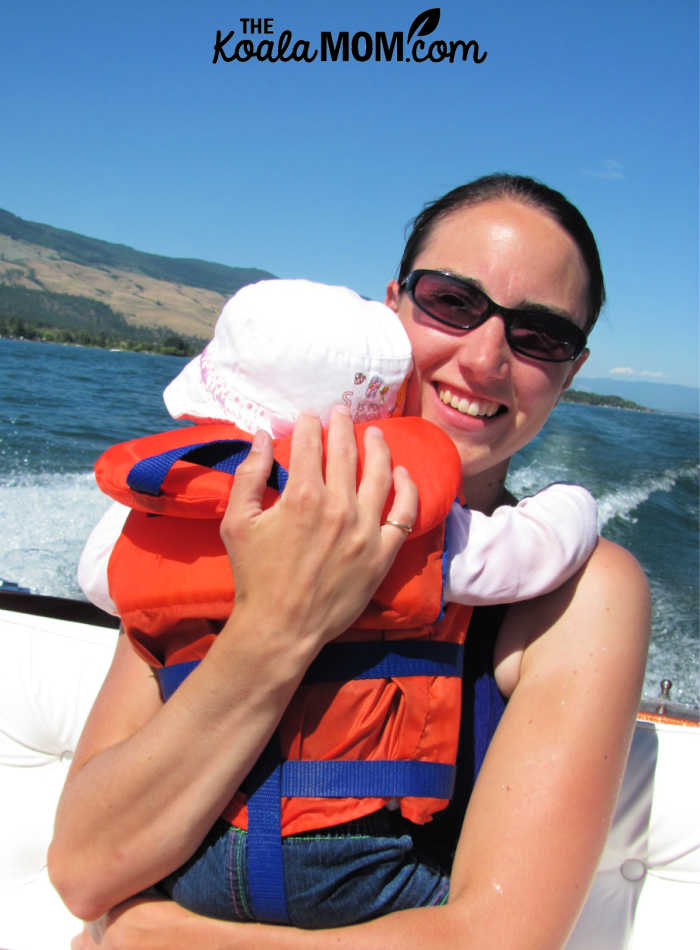
Babies and toddlers may find a PFD uncomfortable to wear, as it is stiff and bulky. On one trip to Wells Grey Park with my mom, Joey refused to spend more than a few minutes in his life jacket in the canoe. We had to cancel our plans of canoeing and spend more time hiking instead. The following year, when we went to Jasper instead, he was old enough to be more interested in the canoe and the scenery around him.
Wearing life jackets is the first step in keeping kids safe while boating, but remember that kids still require supervision while around the water and in a boat. Don’t assume that if an accident happens, the life jacket will save them. When we’re canoeing, I keep Joey within arm’s reach. My older girls can swim but are still close enough to me in the canoe that if anything happened, I can help them.
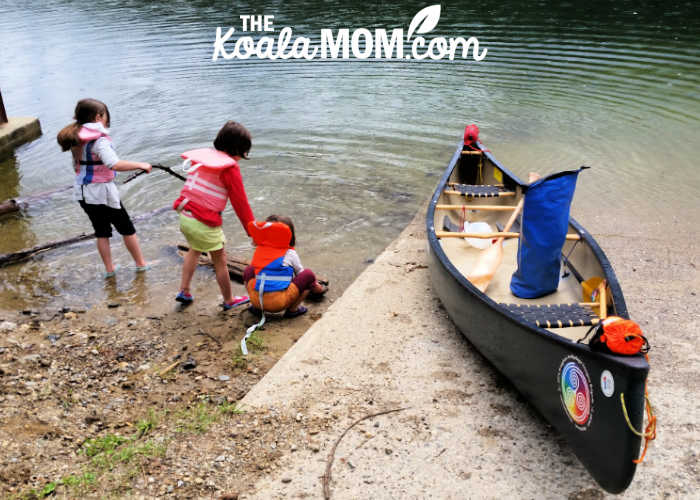
Babyproof Your Boat
You likely spent a lot of time baby-proofing your home and ensuring that no plug was left unguarded, cable left dangling or stair left without a barrier. The same attention should be given to your boat. Luckily, most motor and sail boats come with inbuilt safety measures because they need to be fit for wet weather and choppy conditions; there are very few plugs, and cupboards and cubbies have latches to keep them secured.
However, if your boat has steps, netting or a baby gate can keep kids from falling or climbing unnoticed. Take extra care to secure doors with multiple locking mechanisms. As in your own home, keep cleaners and chemicals out of reach of little ones and cover all sockets. Make sure that they can’t get to gas canisters or the like.
Teach Your Kids to Swim
Keeping kids safe while boating includes teaching them necessary water skills. Every summer, I put my kids in swim lessons at our local pool. My older girls are quite confident in the water, which makes me more confident when we are out canoeing with my mom. We also try to spend time swimming in local lakes, as swimming in a lake or open water is very different than swimming in a pool. One of my daughters finds the darker waters of the lake a bit daunting; she can’t see the bottom as she can in a pool.
Last summer, while camping at Herald Provincial Park with my mom, we spent one afternoon playing in the canoe close to shore before setting out on a longer canoe trip the next day. My mom took each of the kids for a short paddle, helping them get used to the canoe and the lake. She also spent time swimming in the lake with them. Then she took each of the older girls out in the canoe and flipped it over. One of Lily’s greatest fears when we’ve been canoeing is what happens if the canoe flips. Once she found out what that was like (and was able to grab the canoe and swim it back to shore with Grandma after it flipped), she was much more comfortable in the canoe.
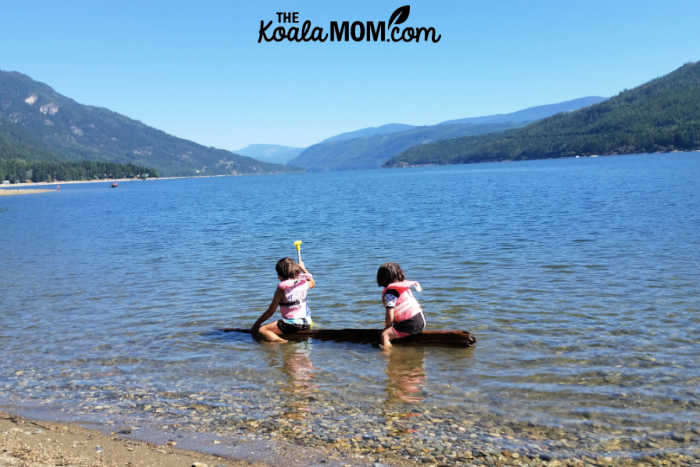
Make sure your kids can tread water for a short length of time if they do fall out of the canoe. It’s also a good idea to review water safety before starting your trip. If the canoe flips, or they fall out of the boat, what should they do? Planning for the unexpected will help everyone enjoy boating more.
Review and Enforce the Rules
No matter what size your boat is, it’s important to set clear rules for kids before starting out. For example, when we’re canoeing with Grandma, the girls know they can’t stand up in the canoe. Anything we take along with us in the canoe is carefully stowed in waterproof bags in the front or back of the canoe, so that there are no extra items rolling about the bottom of the boat.
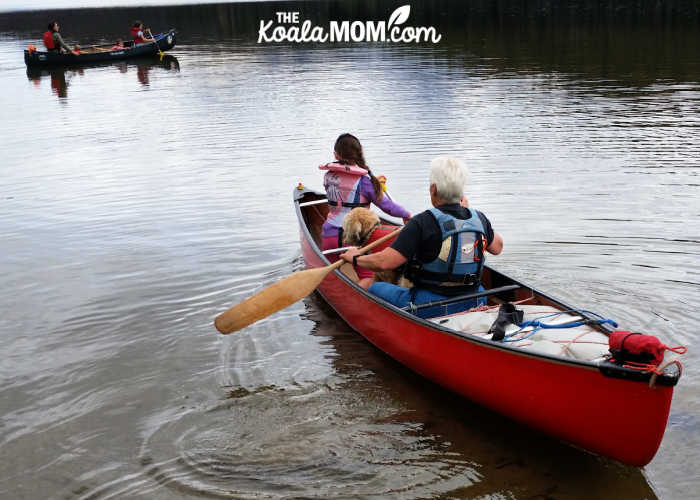
If you own a larger boat, there will likely be more rules about where the kids can go and what they can do.
Make sure they know these rules and that you (and any other adults on the boat) are enforcing these rules. Remember that the rules need to be the same for everyone on the boat. Kids model what they see. If they are required to wear life jackets, then every adult on the boat must be wearing a life jacket as well. If the toddler can’t lean over the side of the boat to trail his hands in the water, then neither can the teenager.
Take a Boating Course
My canoeing experience is limited to a canoe trip with my family as a child, a bit of kayaking, and my once-a-year camping trips with my mom. I’m grateful for her canoe experience when we are out on the water, as I trust in her knowledge and judgement. Without her, I wouldn’t be taking my kids out in a canoe. If you want to start boating yourself (whether in a canoe, sail boat, or motor boat), I highly recommend taking a course and making sure you are comfortable and experienced in a boat before taking your kids out with you. Keeping kids safe while boating will be easier if you know how to be safe yourself and can handle your boat well.
Once kids are old enough, it’s also a great idea to get them into a boating education course. My girls have done a brief canoe course here in Vancouver and we’ve also looked at sailing courses for them. Boating courses may be offered through your local recreation centres or through local boating groups. My mom is involved with her local canoe club and teaches quite a few canoe courses every summer. (I keep hoping to be able to take one of her courses to improve my own skills!)
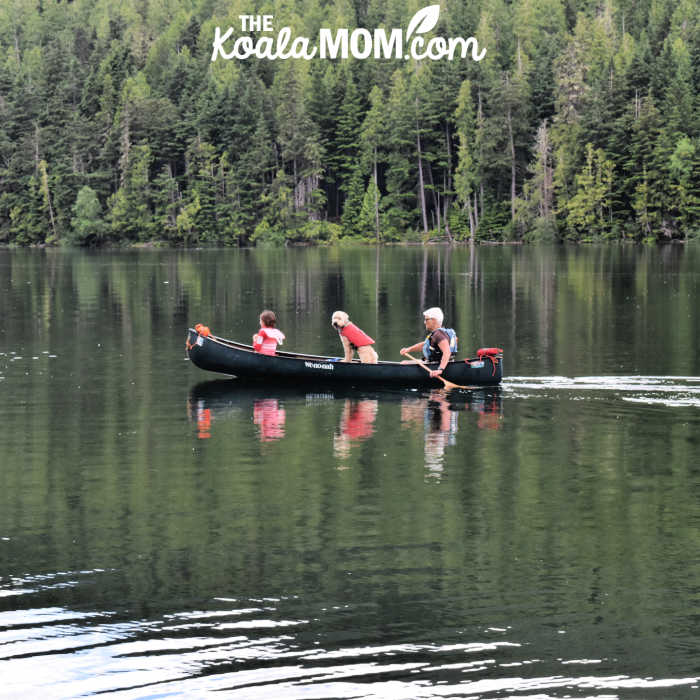
Packing List
No matter how long or short your boat trip is, you should always pack:
- plenty of water
- a basic medical kit
- sunscreen
- hats, sunglasses and long-sleeved clothing
- towels
- rain ponchos
- lots of snacks
- plastic bags for wet clothes
You may also want to take a few things to keep the kids entertained. What this looks like will depend on the size of your boat. For example, in a larger craft, you could take along no mess colouring pages, boating inspired Lego, or board games like Boggle or Sorry that have few pieces. In Grandma’s canoe, the girls are limited to things like sticks they can drag in the water by the boat, their waterproof Kidizoom camera, helping to paddle with a kid-size paddle, or practicing tying knots in the end of a spare rope.
Finally, always have your children within reach and certainly within sight while in a boat. Boating can be an excellent opportunity to teach your children about nature, different bodies of water, maps, and age-appropriate responsibility. Keeping kids safe while boating will ensure plenty of learning and family fun happens while you’re on the water together!
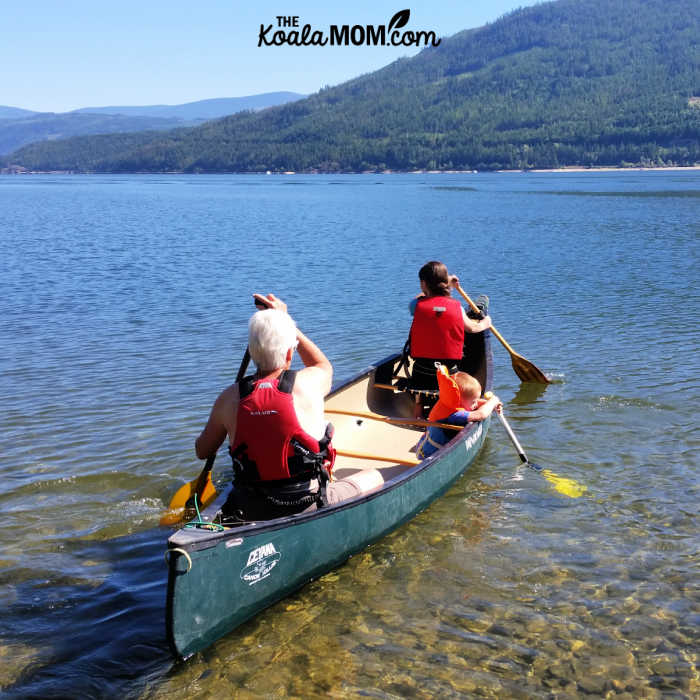
More about keeping kids safe while boating
To learn more about boating safely with your children, check out these resources:
- Discover Boating
- Safe Boater Kids (a comic and activity book from Alaska Boating Safety Program)
- Boater Safety Courses (in North America)
- Sailing Totem (a family sailing around the world)
- The Amazing Adventures of Boat Girl

No Responses Yet